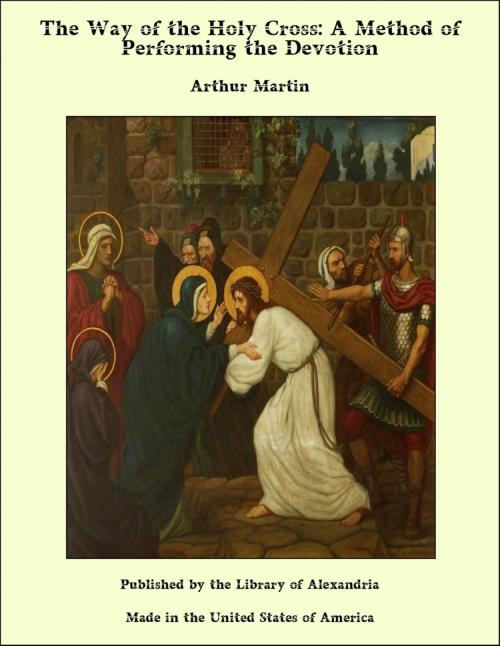The Way of the Holy Cross: A Method of Performing the Devotion
Nonfiction, Religion & Spirituality, New Age, History, Fiction & Literature| Author: | Arthur Martin | ISBN: | 9781465615435 |
| Publisher: | Library of Alexandria | Publication: | March 8, 2015 |
| Imprint: | Language: | English |
| Author: | Arthur Martin |
| ISBN: | 9781465615435 |
| Publisher: | Library of Alexandria |
| Publication: | March 8, 2015 |
| Imprint: | |
| Language: | English |
The Way of the Cross means that space of ground which was travelled over by our Blessed Saviour, from the Governor's Hall, where he was condemned, to the top of Mount Calvary, where he finally expired upon that instrument of martyrdom; and the exercise of the way of the Cross consists in following this Divine Model along the traces which His blood has left, and meditating, meanwhile, upon the sufferings which his love caused Him to undergo there for our sake. According to a very credible tradition, this pious practice may be traced back to the earliest period of the Church, and the august Mother of God is said to have been the first to set the example. "During her latter years," says St. Andrew, of Crete, "she used to frequent incessantly those places where her Divine Son had been loaded with contumely and nailed to the cross." But why seek for written testimony? Doomed to sojourn as an exile upon the earth, away from Him, in whom she loved at once her Son and her God, how could her affectionate heart have been satisfied if she had not visited again and again the spots consecrated by the most memorable events in the life of her Beloved?—and Calvary, above all, where, standing by His side, she had sustained those inward sufferings which have caused her to be styled the Queen of Martyrs? How often must she have been seen, in the evening of her days, musing, with weeping eyes, along the road where her Son had passed, bearing the load of His cross!—and standing, overwhelmed with grief, on the heights where He expired! Fond and inconsolable Parent, she saw Him yet hanging by His wounded hands, His head crowned with thorns, His body mangled, pale, agonizing and dying, and in His agony casting a look from His dying eyes on her. It was here that she caught His last sigh—here, that she had seen the lance enter His heart—here, that she had received into her arms, and clasped to her bosom, His sacred body weltering in its blood. How could she do otherwise than recur often to such scenes, kissing, a thousand times, the earth which had been reddened with His blood, and watering it incessantly with her tears?
The Way of the Cross means that space of ground which was travelled over by our Blessed Saviour, from the Governor's Hall, where he was condemned, to the top of Mount Calvary, where he finally expired upon that instrument of martyrdom; and the exercise of the way of the Cross consists in following this Divine Model along the traces which His blood has left, and meditating, meanwhile, upon the sufferings which his love caused Him to undergo there for our sake. According to a very credible tradition, this pious practice may be traced back to the earliest period of the Church, and the august Mother of God is said to have been the first to set the example. "During her latter years," says St. Andrew, of Crete, "she used to frequent incessantly those places where her Divine Son had been loaded with contumely and nailed to the cross." But why seek for written testimony? Doomed to sojourn as an exile upon the earth, away from Him, in whom she loved at once her Son and her God, how could her affectionate heart have been satisfied if she had not visited again and again the spots consecrated by the most memorable events in the life of her Beloved?—and Calvary, above all, where, standing by His side, she had sustained those inward sufferings which have caused her to be styled the Queen of Martyrs? How often must she have been seen, in the evening of her days, musing, with weeping eyes, along the road where her Son had passed, bearing the load of His cross!—and standing, overwhelmed with grief, on the heights where He expired! Fond and inconsolable Parent, she saw Him yet hanging by His wounded hands, His head crowned with thorns, His body mangled, pale, agonizing and dying, and in His agony casting a look from His dying eyes on her. It was here that she caught His last sigh—here, that she had seen the lance enter His heart—here, that she had received into her arms, and clasped to her bosom, His sacred body weltering in its blood. How could she do otherwise than recur often to such scenes, kissing, a thousand times, the earth which had been reddened with His blood, and watering it incessantly with her tears?















